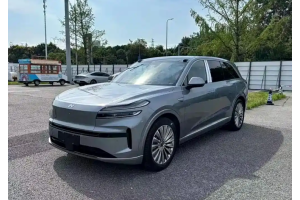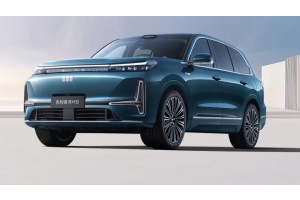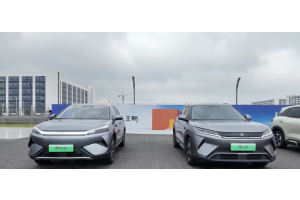Page 3 - Market Analysis
-
May 09, 2025
2024 Global Auto Sales Analysis: Chinese Brands Rise to Prominence
The 2024 global automotive sales rankings have been officially released, revealing the remarkable growth of Chinese automakers. Breakthrough performances by BYD and Geely signal a profound transformation in the global automotive landscape.
Global Automotive Sales Rankings Overview
The 2024 global sales rankings present the following landscape:
- Toyota Motor Corporation (including Toyota, Lexus, Daihatsu, Hino) maintains its global leadership with 10.8 million vehicles sold
- Volkswagen Group (VW, Audi, Porsche, Skoda) ranks second with 9.03 million units
- Hyundai-Kia Automotive Group takes third place with 7.23 million vehicles
- Stellantis (Peugeot, Citroën, Jeep, Fiat) secures fourth position with 6.5-6.8 million units
- BYD Group makes dramatic progress to rank fifth globally
- General Motors (Chevrolet, Buick, Cadillac) places sixth with 4.1 million vehicles
- Ford Motor Company (Ford, Lincoln) ranks seventh with 3.9 million units
-
May 02, 2025
2025 Chinese EV Sedan Market Analysis: 6 Best Budget Models Under $20,000
As the electric vehicle revolution accelerates, the $20,000 price segment has become the most competitive battleground for Chinese automakers. This critical price point delivers exceptional value, combining long-range capability, smart technology, and stylish designs perfect for daily commuting. Our comprehensive comparison of 6 top-rated Chinese electric sedans will help international buyers navigate this dynamic market.
XPENG MONA M03
Price: $16,500-$21,500
The XPENG MONA M03 has emerged as a market sensation, achieving over 30,000 orders within 48 hours of launch. This smart electric sedan represents the cutting edge of affordable EV technology:
Range & Performance:
- Three range options: 515km/580km/620km (CLTC)
- Motor output: 140kW-160kW
- 0-100km/h in 7.4 seconds
Smart Features:
- Standard L2 autonomous driving
- XNGP city navigation in top trim
- Advanced highway and urban driving assistance
Design Highlights:
- Sporty
-
May 01, 2025
The Rising Tide of Chinese MPVs: 2025 Market Insights for Global Buyers
Latest Market Dynamics
The Chinese MPV market is demonstrating unprecedented market concentration in early 2025. Industry data reveals that the top 10 manufacturers collectively sold 136,000 units in January-February, capturing 80.8% market share - the highest consolidation level in three years. This means 4 out of every 5 MPVs sold come from these leading automakers.
Key competitive shifts include:
- DENZA D9 emerged as the market leader with 26,037 units sold in Q1 2025, followed closely by Toyota Sienna
- Domestic brands are making breakthroughs - one Chinese automaker achieved 68% year-on-year growth through dual "BEV+PHEV" strategy
- Traditional leaders like GAC Trumpchi faced 12% sales decline due to slow electrification transition
Growth Drivers
The MPV segment is outperforming sedans and SUVs with double-digit growth, fueled by:
- Family policy changes - China's two/three-child policies boosting demand for spacious
-
May 01, 2025
Best 3-Row Family Vehicles Under $28K: Toyota Highlander vs Honda Odyssey vs Hyundai Custo
Market Context
While large three-row new energy SUVs dominate China's domestic market with average prices around $35K, budget-conscious families can find exceptional value in these gasoline-powered合资 (joint-venture) models priced under $28K. The Toyota Highlander, Honda Odyssey, and Hyundai Custo represent the most competitive options balancing space, features and affordability.
Understanding 3-Row Vehicle Needs
- Frequent full-family travel: Requires genuine third-row comfort for adults on medium/long trips
- Occasional group transport: Prioritizes second-row comfort with third-row emergency capacity
Comparative Analysis
Model Toyota Highlander 7-Seat Elite Honda Odyssey Sharp·Comfort Hyundai Custo Effective Price ~$26,500 <$22,300 $19,500-$21,700 Vehicle Type Midsize SUV Midsize MPV (Space Master) Full-size MPV Dimensions 2850mm wheelbase/4965mm length 2900mm/4861mm 3055mm/4950mm Powertrain 2.5L Hybrid -
April 30, 2025
BYD Achieves Historic Milestone in 2025: Seagull Wins "World Urban Car" and Stella Li Named "World Car Person of the Year"
BYD Seagull Crowned "King of World Urban Cars"
The BYD Seagull made history at the New York International Auto Show by winning the "World Urban Car" award, marking the first time a Chinese automaker has received this prestigious honor. Competing against 12 global finalists, the Seagull impressed judges with its innovative design and exceptional urban mobility performance.
Key Achievements and Features:
- Market Dominance: Since its 2023 launch, the Seagull has achieved over 500,000 cumulative deliveries in China alone by July 2024.
- Global Eligibility: Qualified by being sold in at least two major markets across two continents with annual production exceeding 5,000 units (under 4.25m length).
- Smart Technology: Features include 12.8" touchscreen, fast charging, heated front seats, USB quick charge, plus advanced safety systems like AEB, blind spot monitoring, and lane
-
April 30, 2025
March 2025 Premium Mid-to-Large Sedan Market Sales & Pricing Analysis
Market Overview: Luxury Going Mainstream
With continuous price reductions, the premium mid-to-large sedan segment is becoming increasingly accessible to mainstream buyers. Several models have now dropped below the 300,000 RMB threshold (approximately $41,400 at CNY/USD 7.25), offering exceptional value. German brands continue to dominate this segment, though newcomers like the SAIC Audi A7L are challenging established players like Volvo S90 with competitive pricing and comprehensive capabilities.
Sales Performance by Key Models
German Dominance: The Big Three Lead
- FAW Audi A6L
March sales: 13,545 units | Q1 2025 total: 42,933 units
Current A6L maintains market leadership through aggressive discounts ahead of next-gen model launch - Beijing Mercedes-Benz E-Class
March sales: 10,000+ units | Q1 2025 total: 32,805 units
Stable performance during model transition period - BMW Brilliance 5 Series
March sales: 9,053 units | Q1
- FAW Audi A6L
-
April 29, 2025
BMW Group Global Production Network & Manufacturing Locations Overview
Executive Summary
The BMW Group operates an extensive worldwide production network spanning 16 countries across Europe, Americas, Asia, and Africa, comprising 33 manufacturing facilities. This includes 19 vehicle assembly plants, 8 partner factories, and 6 component/powertrain facilities. As part of its electrification strategy, BMW has established multiple production bases across continents with special focus on developing and manufacturing new energy vehicles.
Key Vehicle Production Plants & Models
China Operations
- BMW Brilliance Shenyang Tiexi Plant (including Lida facility) - Models: BMW 2 Series Gran Coupe, BMW 3 Series, all-electric BMW i3, BMW X1, all-electric BMW iX1, BMW X3
- BMW Brilliance Shenyang Dadong Plant - Models: BMW 5 Series, all-electric BMW i5, BMW X5
European Operations
- Debrecen Plant, Hungary - Models: New Class electric vehicles (production starting late this year)
- Dingolfing Plant, Germany -
-
April 29, 2025
Shanghai Auto Show 2025: Luxury Fuel SUVs Defy EV Trends with Bold Upgrades Shanghai Auto Show 2025: Luxury Fuel SUVs Defy EV Trends with Bold Upgrades
Despite fierce competition from electric vehicles, legacy automakers showcased refreshed flagship SUVs at Shanghai Auto Show, proving fuel models still dominate premium segments in emerging markets.
Key Highlights
- Audi Q5L debuts Huawei Qiankun infotainment with 5th-gen EA888 engine
- Infiniti QX80 challenges Lincoln Navigator with 456HP twin-turbo V6
- Lincoln's 48-inch wraparound screen sets new luxury benchmark
Model Breakdown
1. All-New Audi Q5L
The German marque's best-seller receives its most radical redesign yet. Built on the PPC platform, it features:
- Sharper exterior lines with aggressive front fascia
- Huawei Qiankun smart cockpit system (first in Audi)
- Upgraded 2.0T EA888 engine (5th generation) paired with 7-speed DCT
- Quattro all-wheel drive as standard
2. Infiniti QX80 Flagship
Japan's answer to American full-size SUVs brings:
- 3.5L
-
April 25, 2025
Impact Analysis of Escalating China-US Tariff War on Imported Vehicle Market
Since April 2025, the ongoing tariff dispute between China and the US has significantly impacted the automotive industry, particularly American imported vehicles in the Chinese market. The effects of these increased tariffs and their ripple effects are becoming increasingly evident.
Tariff Policy Escalation
- In April 2025, the White House announced tariffs of up to 245% on certain Chinese imports, with most goods facing approximately 145% tariffs.
- China retaliated with counter-tariffs reaching 125% on key US products including coal, LNG, crude oil, agricultural machinery, and large-displacement vehicles.
Current Status of US Imported Vehicles in Chinese Market
Sales Decline
The imported vehicle market peaked in 2014 with 1.263 million units sold, followed by continuous decline. By 2024, annual imported vehicle sales dropped to 643,662 units, a 16.3% year-on-year decrease.
In Q1 2025, US-brand imported vehicle sales
-
April 25, 2025
Russian Auto Market Dynamics: Reshaping Landscape as Global Brands Prepare to Return
Current Market Situation in Russia
Recent high-level interactions between the US and Russia, along with easing geopolitical tensions in the Ukraine conflict, have created conditions for multinational automakers to reconsider their Russian operations. Several major brands that previously exited due to investment risks are now actively planning their return strategies, potentially reshaping Russia's automotive landscape.
Countdown to Multinational Brands' Return
Key Developments:
- Hyundai: While selling its St. Petersburg plant to AGR Holdings, Hyundai retained a two-year buyback option and maintains active relationships with local dealers and staff.
- Japanese Automakers: Toyota and Mazda have suspended operations but preserved factory repurchase rights while continuing after-sales and parts supply.
- European Brands: Volkswagen recently launched the new Polo model, showing no intention of complete withdrawal.





